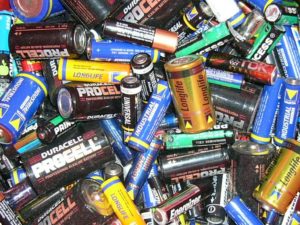In France, the law dictates not to throw batteries in the trash. Because batteries have been considered hazardous waste since the 1990s. They must therefore be directed towards an appropriate sector.
Some 1.3 billion cells and accumulators (rechargeable batteries, batteries) are placed on the French market each year. In these batteries and accumulators, plastic and paper, but above all, many heavy metals which can be toxic – for human beings and more generally for all living beings – and very polluting for soils, in particular: nickel , cadmium , mercury , lead , zinc , lithium , etc.
Discarded in nature, batteries degrade under the effect of corrosion . Thrown in the trash, they are buried – and there also end up degrading – or incinerated. They then release these metals which can pollute the environment . So nickel can be responsible for eczema or sinusitis . The mercury – which fortunately almost disappeared from our batteries – causes gingivitis and attacks the nervous system. The cadmium , which also disappears from our batteries, is itself carcinogenic.

Mandatory recycling
Throwing batteries in the trash or in nature also wastes natural resources, some of which are precious. Because their extraction is polluting and expensive. However, nearly 75% of the materials that make up a battery can be recycled . Over a year, this represents several thousand tonnes of metals recovered . Metals that are then used to manufacture various objects: gutters in zinc , covered in stainless steel , sheet metal cars , etc.
Used batteries must therefore be returned to points of sale – because all stores that market batteries are required to provide a collection point -, certain town halls or areas open to the public or waste reception centers. They can then be removed by a specialized transporter and sent to storage centers where they will be sorted by type ( alkaline batteries, saline batteries, button batteries , etc.). It is only from there that they can be retired. Part of their elements will be recycled and the rest will be placed in a final waste storage center so as not to contaminate the environment.











